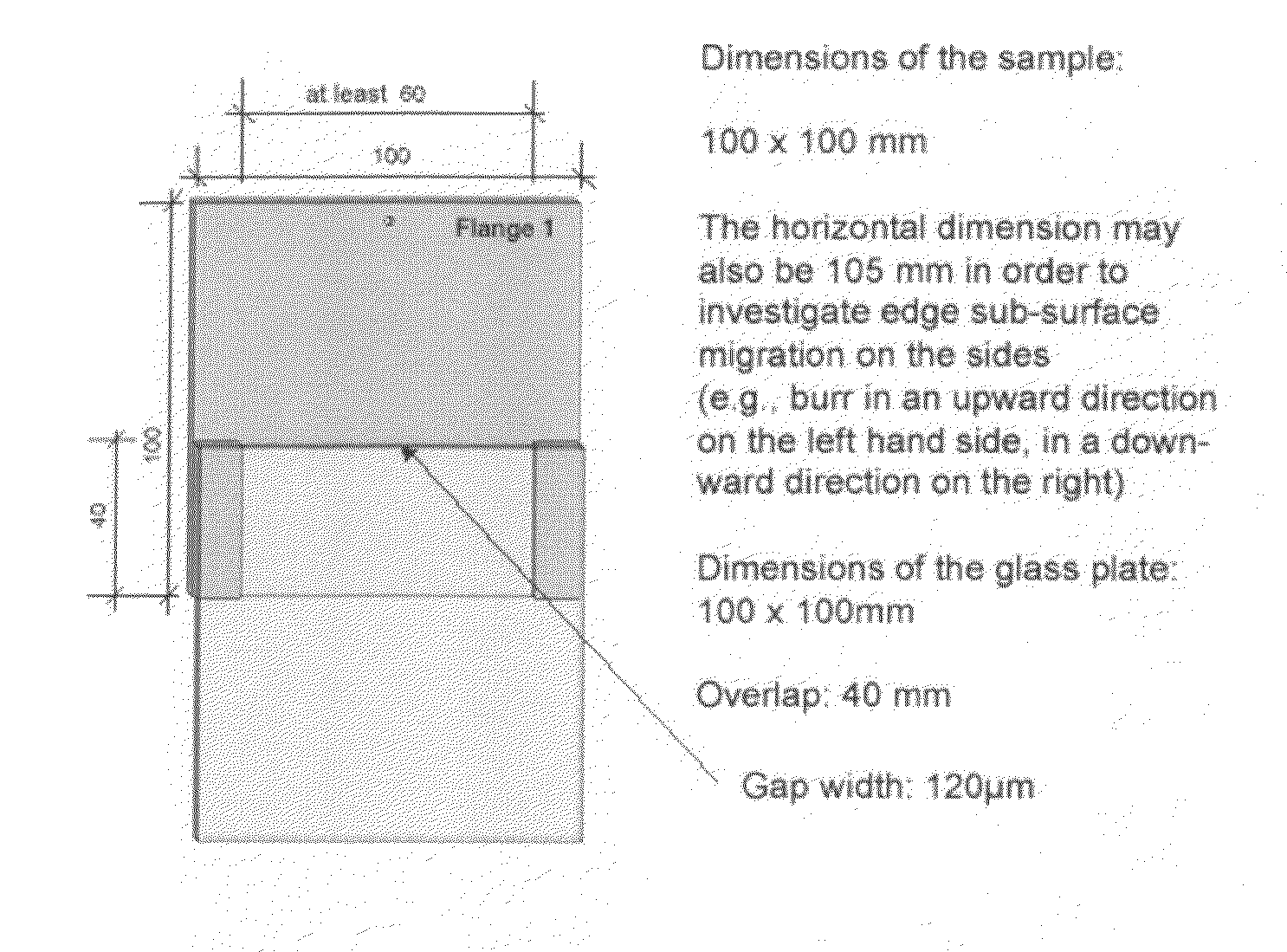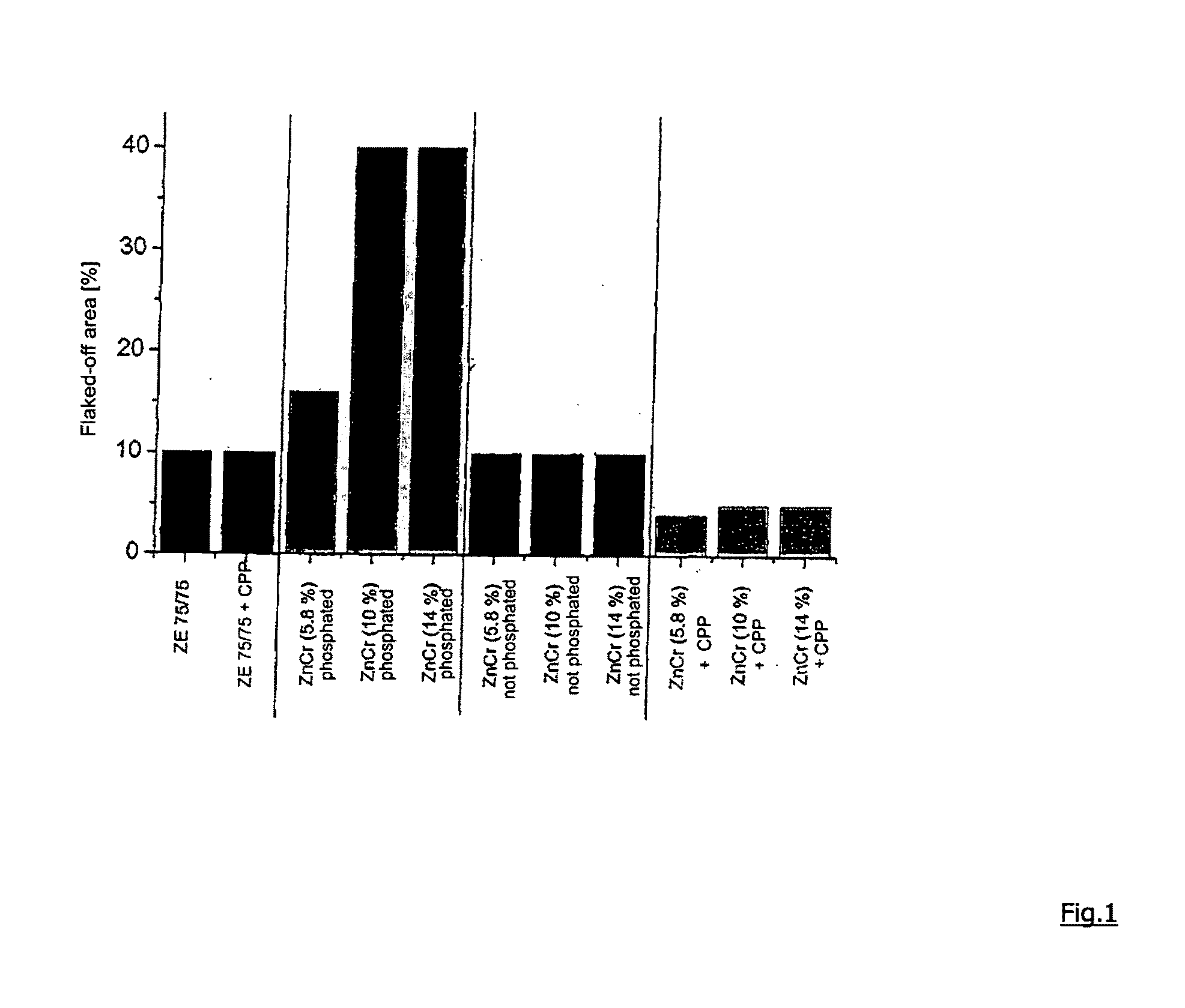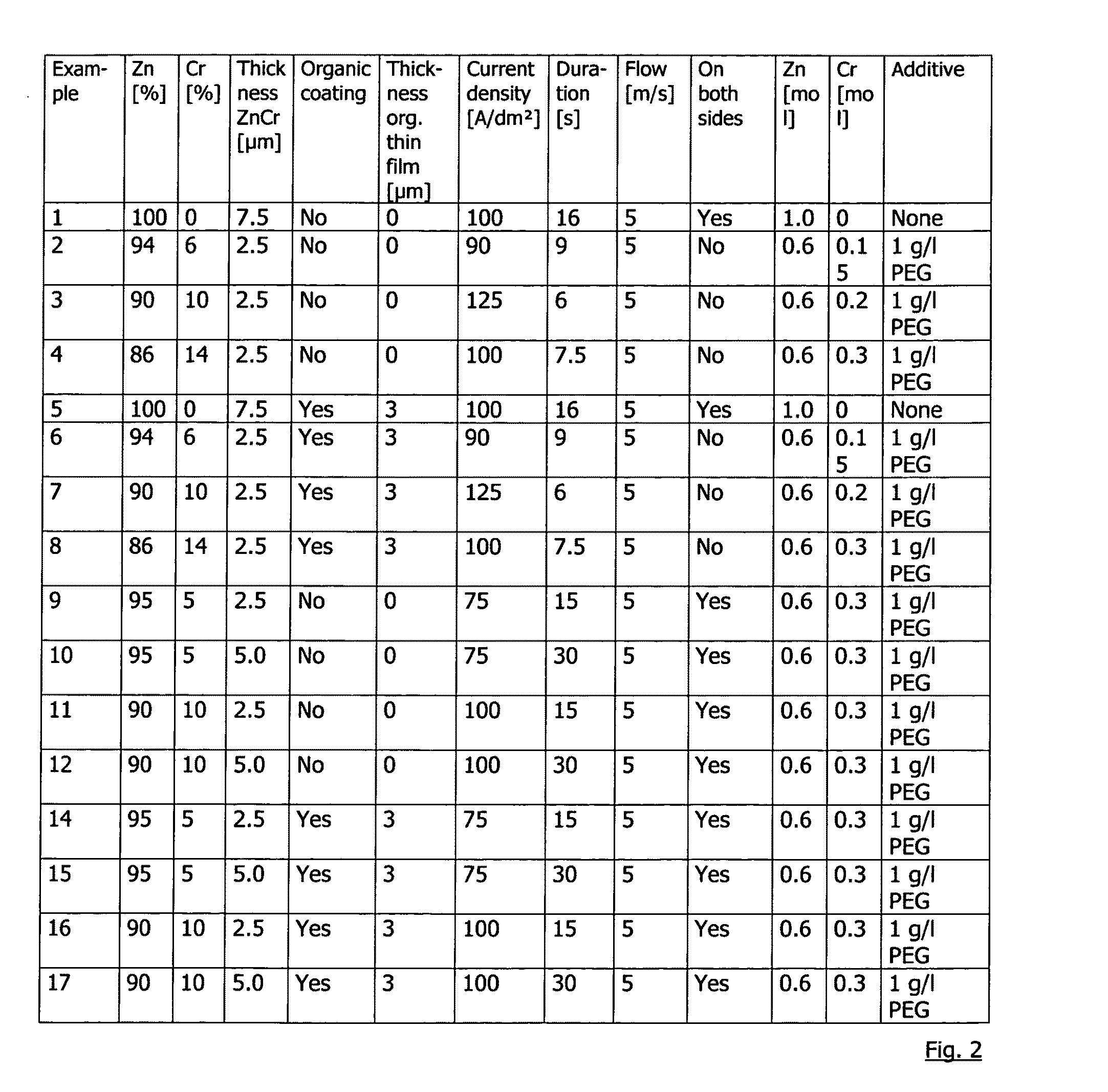Corrosion protective layer with improved characteristics
a protective layer and corrosion protection technology, applied in the direction of superimposed coating process, transportation and packaging, coatings, etc., can solve the problems of insufficient paint adhesion in every case, insufficient spot welding of coatings, and many modern steels that cannot be used for this anymore, so as to achieve improved paint adhesion
- Summary
- Abstract
- Description
- Claims
- Application Information
AI Technical Summary
Benefits of technology
Problems solved by technology
Method used
Image
Examples
Embodiment Construction
[0061]The comparative samples were produced as follows:
[0062]I. Deposition of the Zn—Cr Layer
[0063]The samples are coated on a laboratory coating cell with an adjustable flow rate. Sheets of mild steel (thickness 0.8 mm) and a size of 150×100 mm are coated. The following chemicals are used for producing the electrolyte:
zinc sulfate heptahydrate:ZnSO4×7H2Ochromium potassium sulphate dodecahydrate:KCr(SO4)2×12H2Osulfuric acid:H2SO4(98%).
[0064]The exact concentrations for depositing the exemplary samples are specified in FIG. 2. The pH value of the electrolyte is 2, deposition takes place at a temperature of 40° C.
[0065]The organic thin film is applied using a doctor blade, then, the layer is cured for 30 seconds at an object temperature of 250° C. in an oven.
[0066]Polyethylene glycol 6000 (PEG) was added as an additive during the deposition. The organic thin film (corrosion-protective primer, cpp) consisted of a commercially available product “Granocoat ZE” by Henkel KGaA, with the su...
PUM
| Property | Measurement | Unit |
|---|---|---|
| thickness | aaaaa | aaaaa |
| thickness | aaaaa | aaaaa |
| thickness | aaaaa | aaaaa |
Abstract
Description
Claims
Application Information
 Login to View More
Login to View More - R&D
- Intellectual Property
- Life Sciences
- Materials
- Tech Scout
- Unparalleled Data Quality
- Higher Quality Content
- 60% Fewer Hallucinations
Browse by: Latest US Patents, China's latest patents, Technical Efficacy Thesaurus, Application Domain, Technology Topic, Popular Technical Reports.
© 2025 PatSnap. All rights reserved.Legal|Privacy policy|Modern Slavery Act Transparency Statement|Sitemap|About US| Contact US: help@patsnap.com



